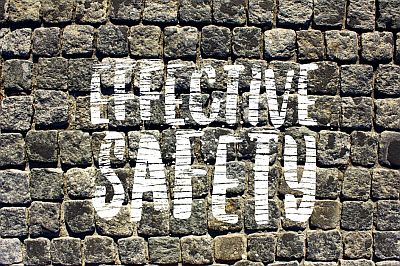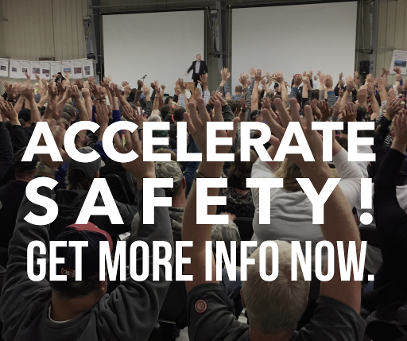Top 3 Strategies To Be More Effective in Safety
Effectiveness in safety is about how little effort it takes to inspire people to do the right things.
 As a safety person, manager or front-line supervisor, you already know that your work can be thankless. But you still have a responsibility (see last week’s post) to drive down the best practices and advice onto those employees at the front-line. That’s where the greatest number of your people are. That’s where the greatest amount of activity is. That’s where the greatest risk of incident exists. What you know about safety needs to get to the front-line.
As a safety person, manager or front-line supervisor, you already know that your work can be thankless. But you still have a responsibility (see last week’s post) to drive down the best practices and advice onto those employees at the front-line. That’s where the greatest number of your people are. That’s where the greatest amount of activity is. That’s where the greatest risk of incident exists. What you know about safety needs to get to the front-line.
Just because you may have the position or title doesn’t mean that you’re effective at what you do. The success of your safety program can not rely on luck. Luck is not sustainable. You need to be the most effective you can be and to help many others to be effective in order for safety to sustain.
Being effective is not about being armed with a set of clever quips to trot out, or an ability to use guilt or threat of harm to make your point. The more you rely on that stuff other people have said or shared on social networks, the more you may actually make yourself less effective. It’s less of authentic “you” and more rehearsed rhetoric.
Let’s assume that you already have a working safety program in place and that yours is a workplace that hires good people to do good work; work that has earned you a decent reputation of quality performance.
Here are the top 3 strategies to help you, as a supervisor, manager or safety person, become more effective in safety:
1The 2-sales rule. When you are trying to advance an idea, you are selling a point-of-view. Yes, selling. If you want your people to buy-in, you’re selling. And in every sales situation, there are two sales being made. The first sale is the person who is selling. If you don’t trust the salesperson, you’re not buying: no matter how good the product may be. The second sale is whatever idea you want to advance. Before anyone is ever going to buy-in to safety, they will first buy-in to the safety person, manager or supervisor. Do not skip this step by assuming that just because you hold a position, people trust what you say. We need to trust other people before we trust what they tell us. People trust those they respect. When you have both trust and respect, you will be able to advance safety in a way that is far more effective than having to resort to threat of harm, injury-stories and guilt. Work extra hard on making the first sale.
2Have a personal mission. How many people are you going to connect with today in a meaningful way? Do you feel that you make a difference in safety? Why is safety important to you? Why should employees care about the safety program (outside of the “not getting hurt” thing)? Companies have a mission statement. Many post them in the lobby for customers and clients to read. What’s your personal mission for safety? You need to be able to clearly define why you do what you do and why safety is important (it will help you with Point #1: respect and trust). When people know that you have a passion for making a difference, for helping people to live better lives, to help them become exceptional employees, you have a reason for getting up in the morning. Oh, and there should also be a list of things that keep you up at night. Your mission needs to overcome that list. See if that doesn’t change the way to view and do the job, and your effectiveness.
3Raise your expectations. What can employees expect from you? If you, through your personal mission (Point #2), are clear on what your people can expect from you, then you can lay out your clear expectations of them. In that order only. You first. Them second. If you are clear on your expectations, and you communicate those expectations in a clear and concise way, most people will rise to meet those expectations. As part of having clear expectations of yourself and your crew, effective communication is essential. Words are just words until the receiving party internalizes what was said and accepts it as understood. Only then does it become communication. Throwing out statistics at a safety meeting is not effective communication. It’s noise. Communicate the one or two things you expect from each person, and don’t be surprised when your people do exactly that. Be clear and have high expectations. Communicate those expectations often. Be consistent.
 You become much more effective when you are trusted, when you share your personal mission and when you have clear expectations. Effectiveness isn’t about how many rules you know or that you can recite. It isn’t about how long you’ve been in the job. Effectiveness is about how little effort it takes to inspire people to do the right things.
You become much more effective when you are trusted, when you share your personal mission and when you have clear expectations. Effectiveness isn’t about how many rules you know or that you can recite. It isn’t about how long you’ve been in the job. Effectiveness is about how little effort it takes to inspire people to do the right things.
Kevin Burns collaborates with safety departments, safety committees, management and front-line supervisors to accelerate safety programs. Through consulting services to create a personalized plan to accelerate safety teamwork, or a safety meeting speaking presentation to rally your employees around safety, Kevin helps improve engagement and teamwork in safety.
Kevin Burns is a management consultant, speaker and author of “PeopleWork: The Human Touch in Workplace Safety.” He believes that the best place to work is always the safest place to work. www.KevBurns.com


